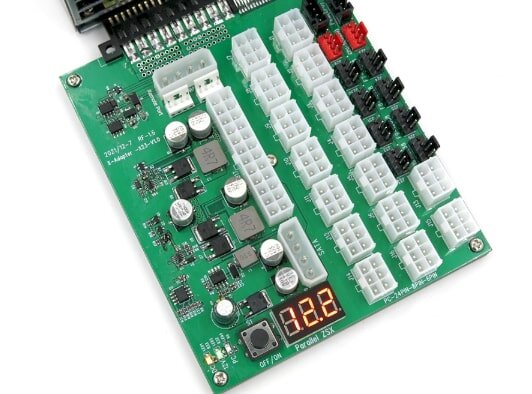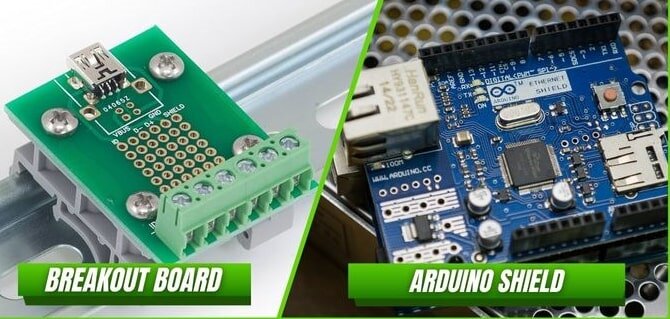Electronic components are integrated circuits (ic). They have pins for power, ground, input, and output. In short, breakout boards make it easy and convenient to use individual electronic components, sensors, or chips. For example, many chips have very small pins (such as QFN or BGA packages), making them inconvenient to solder directly or test using a breadboard. So, some people solder the chip onto a small PCB and then "break out" the pins via wiring to standard 2.54mm pin headers, making it easy to plug into a breadboard for testing.

breakout board
Breakout Board Advantages and Disadvantages: breakout boards are useful, but they also have advantages and disadvantages. Before using them in your project, you should understand them. Let's explore these advantages and disadvantages.
Breakout Board Advantages
1. Quick prototyping without soldering: Ideal for initial circuit functionality verification, saving soldering time and reducing trial and error costs.
2. Easily integrate SMT chips into breadboard designs: Breakout boards convert complex packages (such as QFN and BGA) to a 2.54mm pitch, making them easier to insert into a breadboard.
3. More economical than development boards: For projects requiring only a specific function, breakout boards are often more cost-effective than full development boards.
4. Offer a variety of standard and off-the-shelf options: With a wide variety of options available on the market, breakout boards are available for nearly all common sensors, interfaces, and chips.
5. Labeled pins facilitate connection and debugging: Clear labeling reduces the risk of misconnections and improves debugging efficiency.
6. A suitable alternative to hard-to-find DIP components: When certain devices are only available in SMT packages, breakout boards can easily be adapted for use on traditional platforms.
Disadvantages of breakout boards (limitations to note):
1. Potential for additional parasitic capacitance and interference: Especially in high-frequency or RF applications, the traces on the board can affect signal integrity.
2. Not as compact as direct SMT integration: For products pursuing extreme miniaturization or mass production, breakout boards are not the ultimate solution.
3. Some breakout boards are expensive or require customization: In particular, breakout boards with complex functions, shielding, or power management can be priced close to development boards.
4. Limited options for rare chips or specialized components: Not all components have standardized breakout boards, and it may not be possible to quickly find solutions for unpopular components.
5. Some breakout boards may still require soldering pin headers or connectors: While most are solderless, manual soldering of pin headers, connectors, and other interfaces is still required.
Why are breakout boards so important?
For electronics engineers and makers, time and efficiency are crucial. Breakout boards allow developers to:
Quickly verify the feasibility of design ideas
Quickly swap modules for comparative testing
Avoid damaging expensive chips due to poor soldering
Reduce the risk of failure in self-made boards
They are also the cornerstone of many hardware startups and open-source hardware prototypes. You may even find that the first few prototypes of some official products are actually made by piecing together several breakout boards.
The difference between a breakout board and an Arduino board.
First, breakout boards are smaller and don't take up the entire space of a shield. They're flexible, allowing you to use them with microcontrollers other than Arduino. Breakout boards can be used with other circuit boards as well as Arduino boards. Breakout boards typically have fewer components and are therefore cheaper. While they're cheaper, you can achieve the same functionality as a shield. Some people prefer to buy individual parts and build the entire setup, saving even more.

breakout board and an Arduino board.
With the rapid development of embedded systems and the AIoT, the use of breakout boards is expanding:
Breakout boards supporting high-speed communications (such as USB 3.0 and PCIe) are emerging. More and more breakout boards supporting AI chips (such as the Edge TPU and K210) are becoming available. Multi-function combination breakout boards are becoming a trend (e.g., integrating sensors, power supplies, and wireless communications).
Furthermore, breakout boards have significantly increased their popularity in education, STEM teaching, and hardware competitions. Despite their small size, Breakout Boards significantly simplify development and accelerate prototype iteration, making them an indispensable tool for electronics engineers and enthusiasts. Whether you're just starting out as an electronics student or a hardware developer working on product verification, breakout boards is worth learning and using breakout boards.